#ossie madison
Explore tagged Tumblr posts
Text


Sims for download: Felicity Usher and Ossie Madison from TS2 Console!
I've been playing a lot of Console lately and had a sudden urge to recreate everyone featured there! More to come.
Download: Felicity | Ossie
29 notes
·
View notes
Text


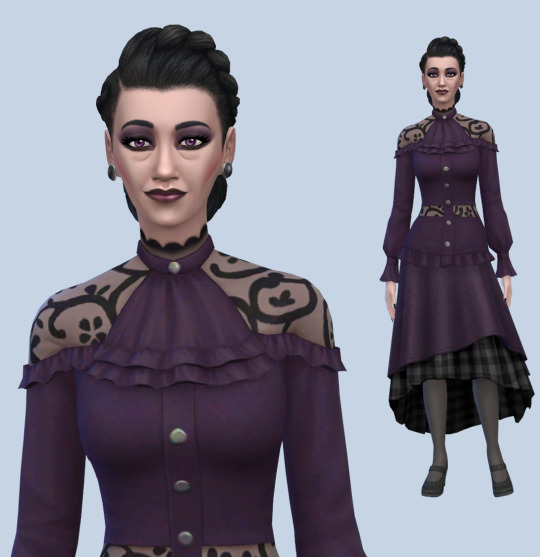
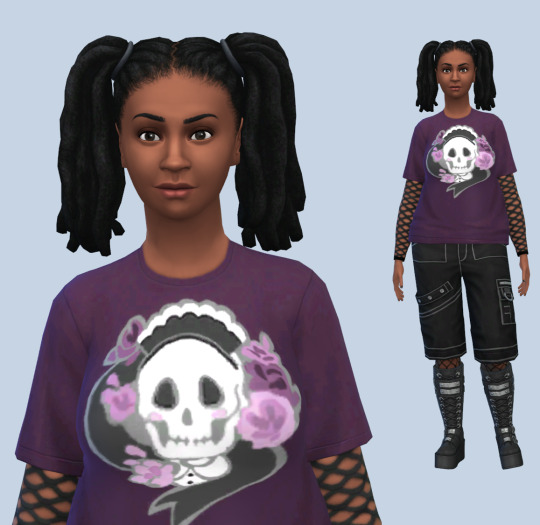

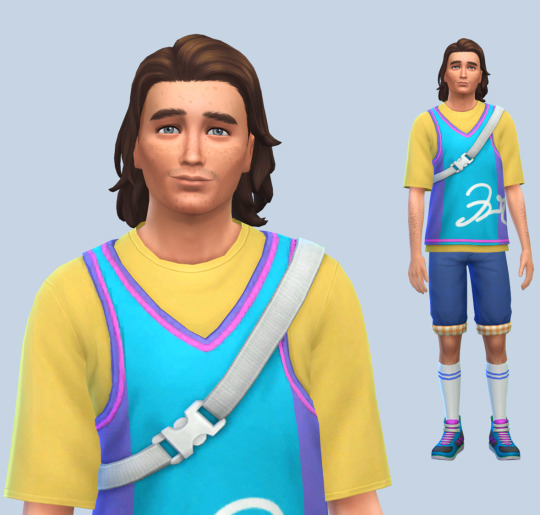
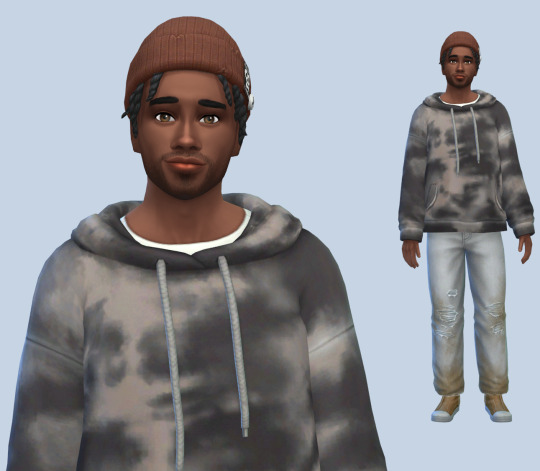
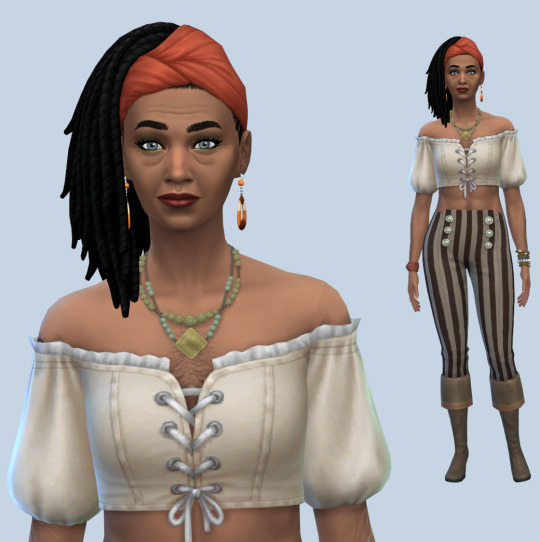


im currently sick with the big c and have minor hearing loss, so here's some more modern day remakes of the ts2 console townies, and brandi from mysims bc why not.
#ts2 to ts4#sims 2 to sims 4#helga mandrake#sheila deadbones#red s. hirt#billy specter#farah moonbiscuit#timmy tool#torin namaste#ossie madison#felicity usher#brandi lolls
5 notes
·
View notes
Text
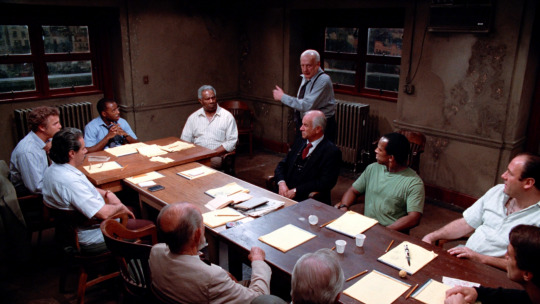
Twelve Angry Men (William Friedkin, 1997)
Cast: Courtney B. Vance, Ossie Davis, George C. Scott, Armin Mueller-Stahl, Dorian Harewood, James Gandolfini, Tony Danza, Jack Lemmon, Hume Cronyn, Mykelti Williamson, Edward James Olmos, William Petersen, Mary McDonnell. Screenplay: Reginald Rose. Cinematography: Fred Schuler. Production design: Bill Malley. Film editing: Augie Hess.
William Friedkin's Twelve Angry Men, which was made for cable television, is not so easily dismissed as an unnecessary remake of Sidney Lumet's classic 1957 film, itself a remake of Reginald Rose's 1954 television drama. Forty years of change have taken place, and although such a jury today would almost certainly have women on it, at least Friedkin's version includes four Black men. One of them, strikingly, is the most virulent racist on the panel: a former Nation of Islam follower played by Mykelti Williamson, who delivers a vicious diatribe against Latinos. Which incidentally brings up another anomaly: There are no Latinos on this jury, even though it is impaneled in New York City, which certainly has a significant Latino population. Oddly, one of the actors, Edward James Olmos, is Latino, but he plays an Eastern European immigrant. The rant of the juror played by Williamson has perhaps even more significance today than it did in 1997, after an election campaign tainted by racist taunts against immigrants: The speech sounds like it might have been delivered at Donald Trump's infamous Madison Square Garden rally. As for the film itself, it retains the 1954 movie's power to entertain, if only the pleasure of watching 12 good actors at peak performance (and in George C. Scott's case, a bit over the peak). It also retains the tendency to preachiness, like a dramatized civics lesson, though maybe we need that more than ever.
#Twelve Angry Men#William Friedkin#Courtney B. Vance#Ossie Davis#George C. Scott#Armin Mueller-Stahl#Dorian Harewood#James Gandolfini#Tony Danza#Jack Lemmon#Hume Cronyn#Mykelti Williamson#Edward James Olmos#William Petersen
5 notes
·
View notes
Text

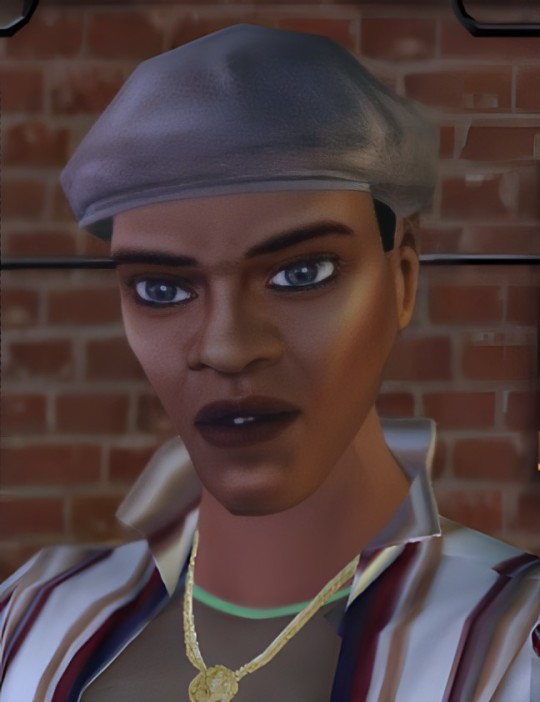
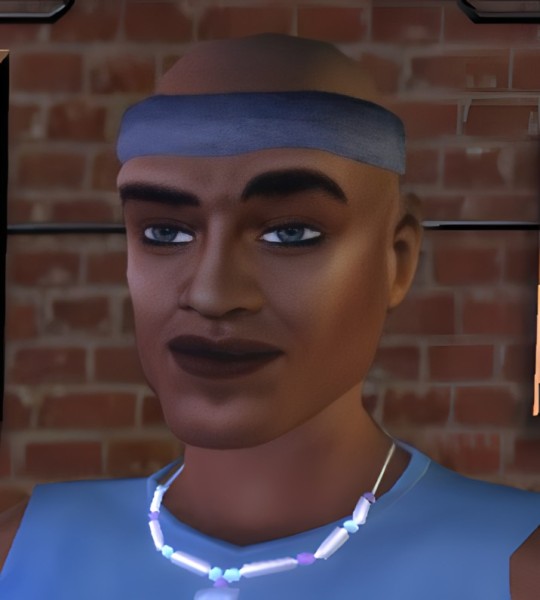
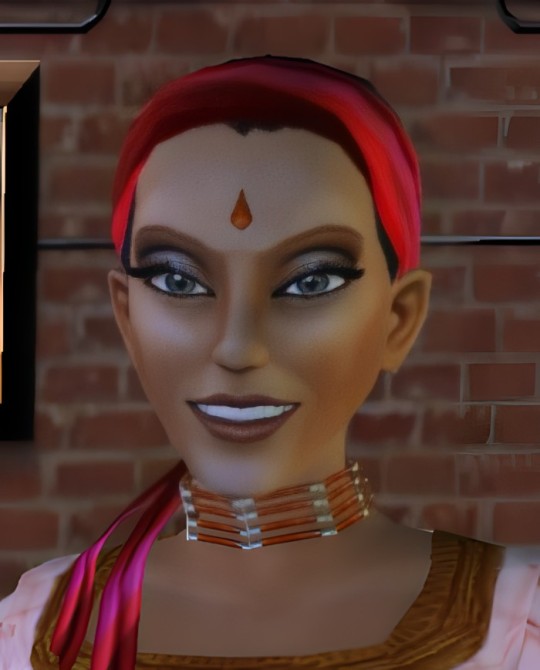
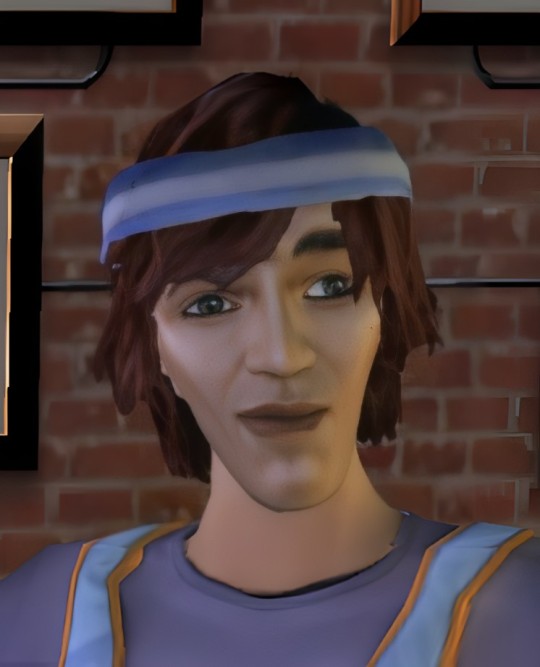
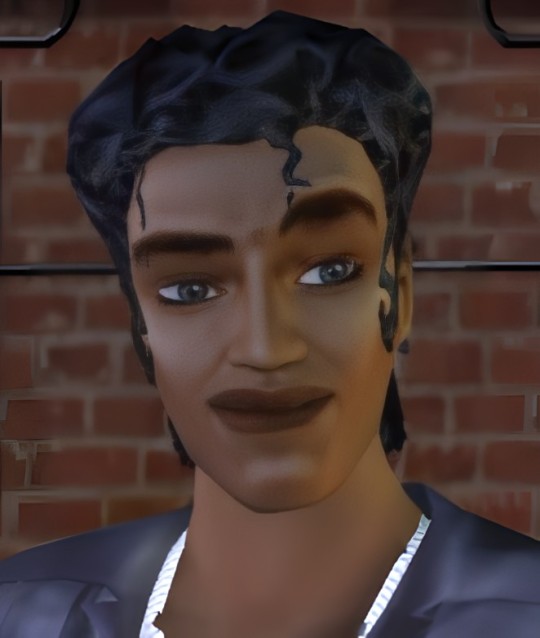

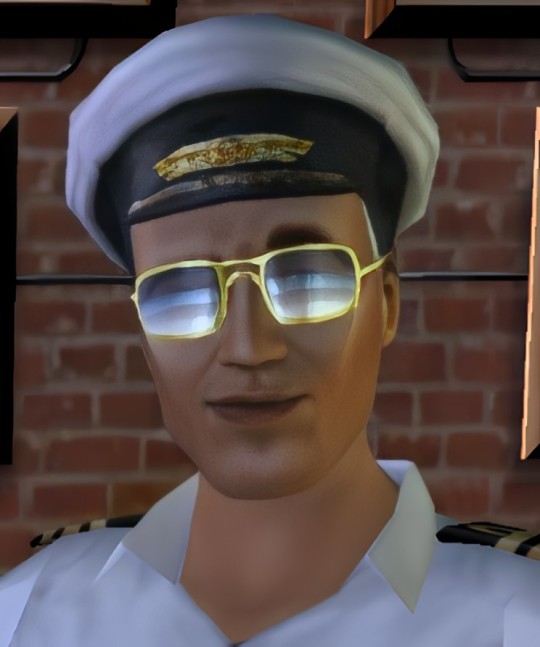
I've decided to continue my series of using a photo editor on the console sims! Next up is all of The Sims 2 console sims!
Featuring:
Felicity Usher & Ossie Madison
Torin Namaste, Farah Moonbiscuit, & Timmy Tool
Hector Fromagero, Betty Buttercup, & Nelson Longfellow
Thank you to @madraynesims for the original headshots that she took of most of these sims.
#sims 2 console#ts2#the sims 2#sims 2#pleasantview#strangetown#melbourne#sims#sims console#ts2c#console
51 notes
·
View notes
Text

(—) ★ spotted!! ODESSA WILLIAMS on the cover of this week’s most recent tabloid! many say that the 24 year old looks like MADISON BAILEY, but i don’t really see it. while the ACTRESS / MODEL is known for being CONFIDENCE my inside sources say that they have a tendency to be IMPULSIVE i swear, every time i think of them, i hear the song GIRL ON FIRE BY ALICIA KEYS. - {she / her / cisfemale}

���⠀⠀⠀⠀⠀⠀⠀⠀⠀⠀⠀⠀⠀⠀* 𝐓𝐇𝐄 𝐁𝐀𝐒𝐈𝐂𝐒 :
NAME : odessa brielle williams. AGE : twenty - four. NICKNAMES : essa, odey, ossie, & many more. DATE OF BIRTH : november 10th, 1998. ASTROLOICAL SIGN : sagittarius. PLACE OF BIRTH : clearwater, florida. PRONOUN(S) : she/her. GENDER : cis female. ORIENTATION : bisexual. RELATIONSHIP STATUS : single. OCCUPATION : surfer gone actress / model. ACTING CLAIM : zendaya coleman. POSITIVE TRAITS : charismatic, passionate, confident, creative, self-motivated, graceful, supportive, ambitious, artistic, open-minded, loyal, kind. NEGATIVE TRAITS : impulsive, stubborn, overthinker, guarded, moody, indecisive.

⠀⠀⠀⠀⠀⠀⠀⠀⠀⠀⠀⠀⠀⠀* 𝐓𝐇𝐄 𝐒𝐓𝐎𝐑𝐘, 𝐩𝐚𝐫𝐭 𝐨𝐧𝐞 :
¹. at precisely 2:30pm, on a tuesday afternoon come november 10th, odessa williams was born into the loving home of her parents — michael and laura williams; drama teacher and architect of coastal town clearwater, florida. from a young age, she was drawn to the ocean, captivated by the rhythmic crash of the waves and the vast expanse of the horizon. her childhood was filled with sandy beaches, salty air, and the thrill of riding the surf.
². growing up, odessa's family embraced the laid-back back lifestyle. her mother, a free-spirited woman with a love for adventure, fostered odessa's passion for surfing. she would wake up early to catch the sunrise with her mother, eagerly awaiting the perfect wave. the bond they shared on those early morning surf sessions would shape odessa's love for the sport and her unwavering connection to the ocean.
laura instilled the values of resilience and perseverance in odessa, teaching her that success comes from dedication and a willingness to push through challenges. this mindset served as a guiding force throughout odessa's life, propelling her forward even in the face of adversity.
³. however, tragedy struck when odessa's mother was diagnosed with cancer. the news shook their world, and odessa's focus shifted from the waves to supporting her mother during her illness. surfing became not only a source of joy but also a means of escape, allowing the female to momentarily forget the pain and uncertainty that loomed over her family.
⁴. as odessa matured, her talent on the surfboard blossomed. she dedicated countless hours to honing her skills, pushing herself to reach new heights and compete at the professional level. with each competition, she inched closer to her dream of turning her passion for surfing into a career. but fate had a different plan in store for the girl. during a critical competition, a devastating injury left her with a long road to recovery. the setback forced her to reassess her goals and find a new avenues for her talent and determination.
⁵. seeking a fresh start, odessa’s father, who had roots in los angeles, decided to pick up and move them back to his hometown. the change of scenery brought both excitement and apprehension for odessa. leaving behind the familiar beaches of clearwater was difficult, but she saw it as an opportunity to explore new possibilities and reinvent herself.
⁶. in la, odessa’s modeling career began to take shape. her unique look, a blend of natural beauty and effortless style, caught the attention of a local photographers and designers. she embraced the world of fashion, using it as a creative outlet while nurturing her love for the performing arts.
while modeling allowed her to express herself in front of the camera, odessa longed for a deeper connection with storytelling. fuelled by her childhood love for the performing arts, she enrolled in acting classes and immersed herself in the craft. though auditions and hard work, she began to gain recognition for her talent and versatility.
odessa’s breakthrough came when she landed the role of rue bennett in the hit hbo series, euphoria. the role showcased her ability to embody complex characters and deliver emotionally charged performances. critics praised her for her authenticity and depth, catapulting her into the spotlight and opening doors to new opportunities in the industry.
as her acting career flourishes, odessa remains grateful for the support of her loved ones and the lessons learned from her surfing background. she carries the spirit of the ocean with her, a constant reminder of her strength and resilience in the face of adversity.

⠀⠀⠀⠀⠀⠀⠀⠀⠀⠀⠀⠀⠀⠀⠀* 𝐂𝐎𝐍. . . 𝐩𝐚𝐫𝐭 𝐭𝐰𝐨 :
⁷. however, beneath odessa’s seemingly charmed life lies a deeply buried secret that haunts her. as a child, she witnessed a traumatic event that continues to cast a dark shadow over her present-day existence. the memory of that fateful night lingers in her subconscious, manifesting as vivid nightmares and triggering bouts of anxiety. she carries the weight of this secret alone, struggling to reconcile her past with her present and often grappling with feelings of guilt and shame.
this dark incident has left odessa with a deep-seated fear of vulnerability and a tendency to keep people at arm’s length, afraid that her secret could be exposed and the fragile world she has built would crumble. she battles with trust issues, fearing abandonment. despite her desire for connection and intimacy, she often finds herself trapped in a self-imposed isolation, protecting herself from potential pain and rejection.
⁸. nevertheless, odessa’s inner strength and determination propel her forward. she actively seeks therapy and engages in self-reflection, but often finds another source of outlet in all the wrong places.
is she taking the role of rue a little too seriously? ⠀⠀⠀⠀⠀⠀⠀⠀⠀⠀⠀⠀⠀⠀⠀⠀⠀⠀⠀⠀⠀⠀⠀⠀⠀⠀⠀⠀⠀⠀ i guess we’ll find out.
more comin' soon!
2 notes
·
View notes
Text




Angela Davis speaking at New York’s Madison Square Garden surrounded by panels of bullet proof glass (Thursday, June 29th 1972, 7:30 PM). Event: The Angela Davis Legal Defense Fund Presents “A Victory Celebration”: AN EVENING WITH ANGELA DAVIS / moderated by Ossie Davis. Benefit for all political prisoners. Rey Barretto; Jerry Butler; Carmen McCrae; Pete Seeger; Voices of East Harlem; and M.C. Ossie Davis. Photos: Angela Y. Davis Papers, Schlesinger Library.
On June 29, 1972, Angela Davis, along with a number of entertainers, appeared at New York City’s Madison Square Garden in a benefit for the Angela Davis Defense Fund. Broadcasted by WBAI, this program includes her speech [starts at 19’] on the need for Black activism and the advantages of socialism, as well as interviews with people attending the show, organizers of the program, and members of the National Renaissance Party, who protested the event. The other speakers and performers on the program are Ossie Davis, Henry Winston, Jerry Butler and Ray Barretto. In archive.org

1 note
·
View note
Text

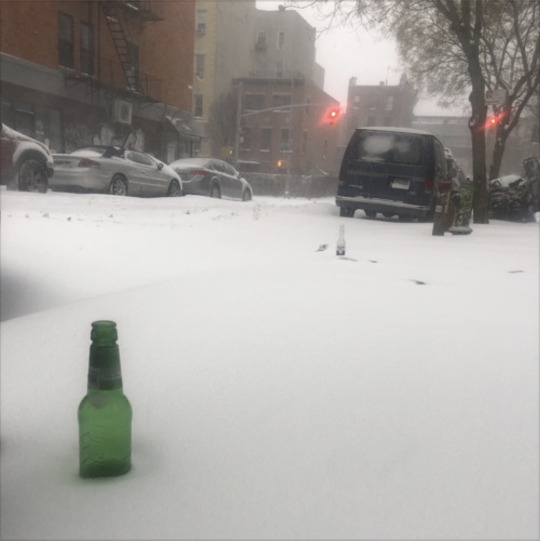
tripreport021: Mirrorworld
liminal dissociation in the mirror realm🪞
A-Side: Mirrorworld Tracklist
1. 00:00 FKA twigs - meta angel 2. 03:47 Commodo - Procession 3. 05:00 Earl Sweatshirt - Fire in the Hole 4. 07:49 Dazegxd - fallin 4 u (i rly like u) 5. 08:48 &on&on - Don’t Say a Word 6. 12:03 Ossie - Flutes of Fire 7. 14:46 RXKnephew - Squabble 8. 17:57 aya - what if i should fall asleep and slipp under 9. 19:30 Siouxxie - ketamine 10. 21:20 TNGHT - Brick Figures 11. 22:45 Yung Bruh - Vintage LSD 2 12. 26:40 Devoye - Sentimental 13. 28:50 AceMo - Mind Jungle 14. 31:10 optic core - Aether World 15. 31:50 FROMTHEHEART - MIDWESTEMO2 16. 33:43 Regal86 - Shine of the Night 17. 35:30 Heatace - Genesis Explorer 18. 38:40 WAVEDASH - Dummo Loop (TRALES Remix) 19. 40:15 eldia - Shell Suit Zero (feat. Dazegxd & Optic Core) 20. 42:32 Joy Orbison - Red Velve7 21. 44:30 Human Part - TRYING 2 (HOLLA @ ME)
B-Side: dlrowrorriM Tracklist
1. 00:00 Years & Years - Starstruck (Vegyn Remix) 2. 03:00 FKA twigs - oh my love 3. 06:42 Body Meat - ULTIMA 4. 09:15 Partok, Matushka, Apfelberg - Nai Nai 5. 11:25 Argy - Magic Order 6. 14:15 Soichi Terada - Bamboo Fighter 7. 16:30 Lauren Bousfield - Our Trauma 8. 19:30 Anklepants - U-Al-Alt 9. 21:55 Unknown - Fellas With an Attitude 10. 24:00 Yuné Pinku - Laylo 11. 25:55 Zomby - Euphoria 12. 29:00 Varg - A Weak Heart to Break (BD 4-Ever) 13. 31:40 Space Africa - Indigo Grit (feat. guest) 14. 32:58 Kirby and the Amazing Mirror - Dark Meta Knight Battle 15. 34:10 M.A BEAT! - Love You (Birthday) 16. 36:30 Less Instructions - Sungrazer 17. 39:15 Penelope’s Fiance - Futile Endeavours 18. 41:10 Aphex Twin - Vordhosbn 19. 42:50 Placid Angles - Vent 20. 44:30 Burial - Shadow Paradise
This month was characterized by dissociation; the sense of living in an alternate reality. New Years didn’t feel celebratory as the Omicron variant was ravaging the city, serving as a reminder that we were still in a global pandemic.
I started off the month back in Tulsa for our friends’ wedding and it was a similarly strange experience being thrown back into the space and relationships I was still processing from 2021.
One of my best friends was in the city when I returned, emphasizing the mirror vibes as we hung out in the empty city. We randomly saw Aziz Ansari do a set at Madison Square Garden. We ate pizza. I was training for a marathon. None of it made much sense at all 🥴
It all felt so liminal—I was in a suspended, absurd period between my career, my social life, my relationships, and the state of the world. This culminated in going to the MERGE rave at Market Hotel at the end of the month, where we entered at 11pm and emerged at 8am to a fully silent NYC covered in a foot of snow. I had never heard the city that quiet before; there were no car sounds, no shouting, no birds, nothing. We had to trek all the way back to a friend’s apartment and the only thing we heard on the way was a car eerily playing “Do You Want to Build a Snowman?”
I had no idea where 2022 was going to go and I could have never predicted the ride it was going to take me on. 2021 was chaotic, but 2022 was a fully new challenge. The music in this mix is a representation of that disparate, absurd, liminal, and just plain weird feeling of starting a new year in the remnants of a global pandemic.
1 note
·
View note
Text
Flake interview 2017 profil (austria)
published 2017-10-23, by Philip Dulle
Flake von Rammstein: "We are not machine people"
Rammstein keyboard player Flake on the end of the big party and his new book of memories.
There is a saying that circulates about the Rammstein phenomenon: the Berlin band has done more for the German language in the past 23 years than the Goethe-Institut has done since it was founded. On social media you can read about fans who only learned German thanks to the six musicians from the former GDR. Whether in São Paulo, Sydney or Paris - everywhere people sing along almost flawlessly when singer Till Lindemann lets his baritone sound. In 2010, the band sold out their concert in New York's Madison Square Garden, probably the most famous arena in the world, in just 20 minutes.
For the Berlin author and radio presenter Marion Brasch, who knows Rammstein very well, the phenomenon is easy to explain: "Despite their superficial brutality, they make beautiful music," she says in an interview with profil. "These are great melodies that touch, even though they come across so fiercely.” In addition, the concerts are an experience without equal - “like a beautiful, colourful, evil children's birthday party”: a perfectly staged spectacle with fire throwers, SM role-playing games and absurd theatrics.
Rammstein keyboardist Christian Lorenz, who has called himself Flake since his youth, is not only his band's prankster on stage, he also has the ability to write wonderfully strange books. After his GDR memoirs ("The Key Fucker", 2015) , the now 50-year-old has now succeeded in creating another gem of oddities, which he cleverly disguised as a memoir for musicians, about the difficult early days of an often misunderstood East ("Ossi") band, but also deals with existential questions.
profile: After decades in the music business, you still don't like giving interviews. Has that never improved?
Flake: We make music that should speak for itself. When I have to explain why a song is written this way or that way, the song obviously doesn't work. That would be like explaining a joke.
profile: You are going on a reading tour with your new book. Can you compare that to a concert?
Flake: I find a reading to be a greater challenge. I'm alone on stage, without costumes and make up, sometimes I feel naked. A band overwhelms with volume, show and rhythm. These resources are not available to me at a reading.
profile: Aren't you happy with your readings?
Flake: It's comparatively difficult for me. Reading is a very intimate thing, not a fun event.
profile: You wrote a kind of band biography with "Today has the world's birthday" after all.
Flake: For me the book is not a Rammstein biography, I would rather categorize it as a novel. In it we accompany a band on a fictional day. The big stuff isn't more important than the small, and being presented with a platinum record as an artist means little to me when I am om stage and need to pee urgently.
profile: How do you explain the success of Rammstein?
Flake: The most important thing after all these years is that we get along well within the band and have learned to deal with each other. We don't argue about financial matters, we don't allow ourselves to be interfered with and we don't let ourselves be destroyed from the outside. As a band we stand together. That's the trick. An elbow society, where everyone fights everyone else, is the wrong way to go if you want to be happy or successful in life.
profile: Do you still wonder about the music business?
Flake: For outsiders it's completely absurd what musicians do all day. They hang out in backstage rooms, shaking hands with thousands of fans like a machine, every day. You can't even tell all that.
profile: In your book, the Rammstein machine noticeably begins to become human. Intentional?
Flake: We're not machine people who just work dull and stubborn, punctual to the second. I try to invite readers into our world, and that only works when you're dealing with people who are close to you.
profile: You talk frankly about escapades and backstage parties. How did that go down with your colleagues?
Flake: They see it very differently. But the escapades weren't really the problem. Everyone has their own story about what happens.
profil: Has the band lost its attraction for you with the success?
Flake: You lose and you gain something, it's similar to a long relationship. At the beginning you are in love, there is total euphoria. Then come the wedding, everyday life and children, you reap the fruits. Suddenly you find yourself on a new level in the relationship. That's exactly how it is with the band. It has nothing to do with sadness.
profile: Today you prefer to watch "House of Cards"?
Flake: I don't have that much fun with lavish parties and drinking all night long anymorre. I prefer to go to bed early.
profile: Do you have a life besides music?
Flake: Especially people who are crazy about their music have a hard time in life. These are often the ones who get into a big crisis when things aren't going so well. I'm really only a musician on stage - and besides the band I have a completely normal private life.
profile: Rammstein concerts are spectacles. Between the fire show and stage dramaturgy, isn't there a lack of engagement with the music?
Flake: I can reassure you: I'm totally into the songs for the whole two hours and feel the music. The show is the accessory.
profil: Are you pursuing a higher goal with the band?
Flake: I believe that we have helped many people in life, given them self-confidence. In our early years, we sometimes received letters from abuse victims who, through Rammstein, for the first time dared to talk about their trauma and go to the police. Music is also a tool that helps you distance yourself from your parents and cut your cord.
profile: People around the world are learning German because of Rammstein. Does that honor you?
Flake: Not only that. Germany is also seen differently because of us. In many countries, people started to think about Germany because we happened to play a concert there.
19 notes
·
View notes
Link
Jazz and freemasonry are unlikely bedfellows, but in the 1950s, the secret society became a support network for musicians and the world’s largest fraternity for black men, among them Duke Ellington and Sun Ra
When the City of London festival found out about a long dormant masonic temple that had been uncovered next to Liverpool Street station, it seemed obvious that this wonderfully opulent hall should be used as a one-off music venue. The only question was – what music should it host?
“The obvious choice would have been to host a Mozart recital, because everyone knows that Mozart was a freemason,” says Paul Gudgin, former director of the Edinburgh Fringe and now director of the City of London Festival. “But it just so happened that I was reading a biography of Duke Ellington which mentioned, in passing, his membership of a masonic lodge. I found it astonishing that such an anti-establishment figure turned out to be at the heart of an establishment organisation. And I thought it would be a perfect place to pay tribute.”
This month, the City of London Festival will host two Duke Ellington tributes in this elaborate, neo-classical masonic temple, now in the basement of the Hyatt group’s Andaz hotel. Saxophonist Tommy Smith plays on 4 July, and pianist Julian Joseph on 11 July.
“It’s something of a badge of honour to hear that Ellington was a mason,” says Joseph. “Not only was he part of a musical elite, but he had managed to enter this secretive and powerful organisation, one that only the privileged few had access to.”
Start digging into the history of freemasonry and you discover that Ellington was just one of many renowned African-American musicians to be inducted into its mysterious world. He was joined by the likes of Nat King Cole, WC Handy, Dizzy Gillespie, Count Basie, Lionel Hampton and Paul Robeson.
“Throughout history, freemasonry has attracted musicians,” says Martin Cherry, librarian at the Museum of Freemasonry in London. “Mozart is the obvious example, but in 18th-century London, a lodge was established called the Lodge of the Nine Muses, which attracted a number of European musicians and artists, including JC Bach. For musicians and artists who were new to a city, the lodge would have been an opportunity to meet fellow artists and network with people with whom they may be able to find work.”
The same applied two centuries later, across the Atlantic. “Musicians often led an itinerant lifestyle,” says Cherry. “Belonging to an organisation that had lodges all over a country could help ease the slog of life on the road, particularly in such a vast country as the US.
“Freemasonry was also charitable towards its members when they fell on hard times, looking after them when they were sick or paying for their funeral. Mozart’s funeral, famously, was paid for by his lodge, and there’s evidence that freemasons paid for the funeral of the blues musician Mississippi Fred McDowell – there are images of his open coffin which show him wearing his masonic regalia.”
Many white jazz musicians and bandleaders were freemasons, including Glenn Miller, Paul Whiteman, George Gershwin and Irving Berlin, as were many country & western stars. But, like so much in American life, freemasonry was segregated, with American masonic lodges split along colour lines.
Black freemasons: the sons of Prince Hall
Black freemasonry dates from before the American war of independence, when a freed black abolitionist and leather worker by the name of Prince Hall (1735-1807) was refused admittance to the St John’s masonic lodge in Boston, Massachusetts. Undaunted by the rebuff, Hall and 14 other free black men were initiated into freemasonry in 1775 by a British military lodge based in Boston.
In 1784, after the British had left America, the grand lodge of England issued Hall with a charter to set up an African lodge in Boston. It proved so popular that Prince Hall was granted the status of provincial grand master, allowing him to set up two further African masonic lodges in Philadelphia and Rhode Island.
Over the next two centuries, Prince Hall freemasonry snowballed across the United States, becoming the world’s largest fraternity for black men. By the middle of the 20th century there were lavish Prince Hall masonic temples around the country – from Los Angeles to Washington DC, from Seattle to Madison, Wisconsin.
“One of the attractions of Prince Hall freemasonry to African-Americans is that it is an organisation started by African-Americans in the 18th century for African-Americans,” says Cherry. “It has a history. And, like all freemasonry in America, it became very popular in the early 20th century, which was a time when Americans tended to join things.”
By 1900, Prince Hall masonry had become a forum for politicised African-Americans, with Booker T Washington (1856-1915) and W.E.B. Du Bois (1868-1963) serving as active members. Throughout the 20th century, many key figures in the civil rights movement were attracted to freemasonry. The father of Martin Luther King Jr – Martin Luther King Sr (1900-84) – was a member of the 23rd lodge in Atlanta, Georgia. Medgar Evers, the National Association for the Advancement of Colored People (NAACP) activist who was assassinated in 1963, was a 32nd-degree freemason in Ancient & Accepted Scottish Rite, Southern Jurisdiction. Alex Haley (1921-92), the writer of Roots and biographer of Malcolm X, was a 33rd-degree mason in the same order. Thurgood Marshall (1908-93), the first black member of the US supreme court, was supported by his Prince Hall lodge in Louisiana. The comedian Richard Pryor (1940-2005) joined a lodge in Peoria, Illinois, while actor and activist Ossie Davis (1917-2005), Paul Robeson (1898-1976) and the boxer Sugar Ray Robinson (1921-89) were all active Prince Hall masons.
“Like all freemasonry, Prince Hall freemasonry does tend to have a middle-class appeal,” says Cherry. “The many Prince Hall visitors to the Masonic Library and Museum in London are often doctors, lawyers or skilled artisans, and a lot of them have a military background. Some join because their family were members; some think it’s a good way of networking. Some like the comradeship and the social aspects; others like the ritual and the regalia.”
As well as being a networking institution, freemasonry might also have had a philosophical appeal to many politicised African-Americans. The mysterious tenets of freemasonry include gnostic texts, references to ancient Egypt and alternative interpretations of the Bible. Prince Hall lodges thus became a forum where pre-Christian knowledge could mix freely with black liberation theories and remnants of African religions...”
#jazz#duke ellington#music#culture#paul robeson#freemasonry#freemason#freemasons#lost keys of freemasonry#Prince Hall#Nat King Cole#W.E.B. DuBois#booker t. washington
29 notes
·
View notes
Photo










NOVEMBER 2020->MARCH 2021: Instagram Photo Dump No.8
POST DATE, L-R BY ROW:
1. 6th December 2020 [Berkeley Square, Mayfair], 3rd December 2020, 1st December 2020, 27th November 2020, 25th November 2020, 22nd November 2020, 20th November 2020, 18th November 2020, 17th November 2020 [Florence Welch photographed for the Gucci Bloom Eau de Parfum campaign]
2. 11th December 2020, 25th December 2020 [Adut Akech shot by Nadine Ijewere for British Vogue, January 2021 issue], 18th December 2020, 16th December 2020 [Sasha Pivovarova BTS @ Dior RTW S/S08, makeup by Pat McGrath], 14th December 2020, 21st December 2020, 14th December 2020 [Elie Saab Haute Couture S/S19], 6th December 2020, 13th December 2020
3. 28th December 2020, 3rd January 2021, 6th January 2021 [KW Institute for Contemporary Art, Berlin], 30th December 2020, 1st January 2021, 5th January 2021 [Zoe Kravitz for Allure Magazine June 2017 issue], 8th January 2021, 11th January 2021 [Lana Del Rey in Music to Watch Boys to, 2015, edited, source unknown], 27th December 2020 [dress stocked on www.wildthing.com]
4. 22nd January 2021, 1st February 2021, 29th January 2021 [The Viktor Wind Museum of Curiosities, Bethnal Green], 13th February 2021, 27th January 2021, 24th January 2021 [Alexander McQueen RTW S/S12], 9th February 2021, 20th January 2021 [print by Julia Petrova], 15th January 2021
5. 27th October 2020 [Lokanaan e Salomé by Takato Yamamoto], 29th October 2020, 2nd February 2020 [makeup by Isabelle De Vries, instagram account: @isabelle.de.vries], 4th July 2020 [Twiggy photographed for Ossie Clark, 1969], 25th January 2021 [Louis Vuitton Menswear F/W21], 29th October 2020, 26th February 2021 [source: instagram account @collagesbykalie], 20th February 2021, 16th February 2021 [Gucci 2020 Resort Collection]
6. 30th November 2019 [Olafur Eliasson: In Real Life exhibition @ Tate Modern, Bankside], 3rd November 2020 [Cafe Bosca Nova, Bournemouth], 15th December 2019 [Sora Choi for Korean Vogue, August 2019 issue], 12th August 2020, 1st January 2021 [source unknown], 29th October 2020, 27th November 2020 [Saks Potts “Foxy” coat worn by Madison Beer @ Paris Fashion Week, January 2019], 4th July 2020, 13th November 2020 [source: twitter account @GH0ULBR4T]
7. 27th February 2021, 15th October 2019 [Zoe Kravitz photographed out in New York, 21st August 2014], 23rd October 2020, 26th May 2020, 9th January 2021 [Maison Margiela Artisinal S/S16], 10th October 2020, 29th October 2020, 2nd October 2020, 22nd December 2020
8. 4th December 2020 [Lana Del Rey photographed by Justin Campbell, 2010], 19th December 2019, 6th December 2020 [Miley Cyrus for Rolling Stone Magazine, January 2021 issue, edited, source unknown], 19th November 2020 22nd October 2020, 20th March 2020 [source: twitter account @meenavoguee], 28th August 2019 [Lana Del Rey for Numero Tokyo, March 2013 issue, edited, source unknown], 23rd October 2020, 17th November 2020
9. 8th November 2020, 22nd October 2020 [corset designed by Joyce Spakman, source: twitter account @ngelbot], 29th October 2020, 14th December 2020 [FKA Twigs on Later...with Jools Holland, March 2020, source: twitter account @fendifaguette], 24th November 2020, 14th June 2020 [Shea Coulee as Grace Jones, shot by Broderick Baumann, July 2019], 26th November 2020, 8th November 2020, 17th November 2020 [chain link open back dress designed by Dion Lee, source: twitter account @hotdystopia]
10. 29th October 2020, 21st March 2021 [Rihanna for US Harper’s Bazaar, May 2019 Big Beauty issue], 2nd February 2020 [Lana Del Rey photographed by Glynis Carpenter for Complex Magazine, February/March 2012 issue], 19th October 2020 [source unknown], 8th June 2020, 29th October 2020 [source: twitter account @thatbearmatt], 11th November 2020, 6th December 2020 [source unknown], 20th December 2020
#photo dump#my photos#photography#moodboard#spam#aesthetic#throwback#fashion#fashion inspo#inspiration#inspired#grunge aesthetic#grunge#high fashion#designer#runway#haute couture#beauty#style#pretty things#scenery#pretty places#wanderlust#street photography#street style#art#london#travel#londonist
6 notes
·
View notes
Text
Home Entertainment Consumer Guide: October 4, 2018
10 NEW TO NETFLIX
"Billy Madison" "Blade II" "Blazing Saddles" "Chappaquiddick" "The Devil's Advocate" "The Green Mile" "Monty Python's Life of Brian" "Mountain" "Mystic River" "The Shining"
7 NEW TO BLU-RAY/DVD
"Andrei Rublev" (Criterion)
It's funny how classic directors can ebb and flow into the national conversation. I feel like I've heard Andrei Tarkovsky's name more in 2018 than in many recent years. Some years everyone thinks everything is "Hitchockian" or "Kubrickian." Perhaps Film Twitter is expanding its auteur vocabulary because I've seen several recent films, including "Annihilation" and "High Life," compared to Tarkovsky's work. Did Criterion somehow know this was going to happen, thereby timing their HD upgrade of his epic "Andrei Rublev" for late September? Probably not, but you never know. As for the release, it's a beauty, including both versions of the film, a few documentaries, and new interviews. Some of the Criterion upgrades are merely that (imports of special features with an HD transfer) but this is more like a brand new release. After all, Andrei Tarkovsky has never been hotter.
Buy it here
Special Features New high-definition digital restoration of the director’s preferred 183-minute cut, with uncompressed monaural soundtrack on the Blu-ray The Passion According to Andrei, the original 205-minute version of the film Steamroller and Violin, Tarkovsky’s 1961 student thesis film The Three Andreis, a 1966 documentary about the writing of the film’s script On the Set of “Andrei Rublev,” a 1966 documentary about the making of the film New interviews with actor Nikolai Burlyaev and cinematographer Vadim Yusov by filmmakers Seán Martin and Louise Milne New interview with film scholar Robert Bird Selected-scene commentary from 1998 featuring film scholar Vlada Petric New video essay by filmmaker Daniel Raim New English subtitle translation PLUS: An essay by critic J. Hoberman
"Leave No Trace"
Debra Granik's first film since "Winter's Bone" remains one of my favorites of 2018 and loses none of its remarkable power on second viewing at home. It's just as phenomenal as I remember when I saw it at Sundance. This is a gentle, truthful tale about a father and daughter growing apart, a division deepened by his severe PTSD. Thomasin Harcourt McKenzie gives one of the most genuine performances of the year, and Ben Foster nearly matches, finding a more subtle register than the one for which he's most well-known. This is a beautiful movie, one that I hope everyone gets a chance to see.
Buy it here
Special Features Creating Leave No Trace - Featurette Deleted Scenes Behind the Scenes Vignettes Location Scout Photo Gallery
"The Naked Prey" (Criterion)
Academy Award nominee Cornel Wilde stars in this adventure film, which he also directed and produced, reportedly based on the life of John Colter, an explorer chased by Blackfoot warriors in Wyoming. The script for "Naked Prey" was Oscar-nominated but if you're thinking this is a relatively obscure choice for Criterion, especially when compared to the other two films in this column, you're not wrong. The company often includes at least one film a month that you probably haven't heard of or at least haven't seen in a very long time, to go with it's more widely-acknowledged collection of classics. Such is the case with "Naked Prey," a film that reportedly earned mixed reviews on its release but is now considered influential both in its focus and brutality. Roger himself was not a fan. Buy it here
Special Features Restored high-definition digital transfer, with uncompressed monaural soundtrack on the Blu-ray Audio commentary from 2007 by film scholar Stephen Prince “John Colter’s Escape,” a 1913 record of the trapper’s flight from Blackfoot Indians—which was the inspiration for The Naked Prey—read by actor Paul Giamatti Original soundtrack cues created by director Cornel Wilde and ethnomusicologist Andrew Tracey, along with a written statement by Tracey Trailer PLUS: An essay by film critic Michael Atkinson and a 1970 interview with Wilde
"A Raisin in the Sun" (Criterion)
When Lorraine Hansberry wrote A Raisin in the Sun in the '50s, do you think she had any idea it would become a staple of American theater, and regularly adapted for film and television? The play has really stood the test of time, and it's still produced in near-constant rotation around the country, but Criterion has gone with the original, and still-best, film production of it, starring Sidney Poitier, Ruby Dee, Claudia McNeil, Diana Sands, and Louis Gossett Jr. Regular readers of this column know that I'm always curious about the timing of Criterion releases. So why "Raisin" now? Well, it's clear that the themes of the play still resonate today, and perhaps the company is responding to criticism that their collection is largely full of white filmmakers telling white stories. Whatever the reason, "A Raisin in the Sun" remains essential to the story of American theatre in the '50s and '60s and this is a great way to bring this seminal work to a wider audience.
Buy it here
Special Features New, restored 4K digital transfer, with uncompressed monaural soundtrack on the Blu-ray Interview from 1961 with playwright/screenwriter Lorraine Hansberry New interview with Imani Perry, author of Looking for Lorraine Episode of Theater Talk from 2002 featuring producer Philip Rose and actors Ruby Dee and Ossie Davis Excerpt from Black Theatre: The Making of a Movement (1978), with a new introduction by director Woodie King Jr. New interview with film scholar Mia Mask, coeditor of Poitier Revisited Interview from 2002 with director Daniel Petrie Trailer PLUS: An essay by scholar Sarita Cannon and author James Baldwin’s 1969 tribute to Hansberry, “Sweet Lorraine”
"Solo: A Star Wars Story"
If you ask a certain sector of the movie-going public, they'll tell you that "Solo: A Star Wars Story" was a massive bomb. They'll claim that negative feelings about "Star Wars: The Last Jedi" caused a backlash against "Solo" and the box office reflected that, leading to the lowest-grossing "Star Wars" film of the modern era (and that includes the prequels). The truth is that "Solo" likely wasn't as impacted by "TLJ" as it was over-saturation. There was a time when a "Star Wars" movie was an event, which is inherently more difficult when one is practically still playing in theaters as a new one comes out. There's also the fact that, sorry, "Solo" isn't very good. One can see the struggle behind the scenes that led to Ron Howard being brought in to helm the pic, and the result is a film that's only sporadically entertaining (and horribly under-lit). The Blu-ray is solid, as they often are for "Star Wars" films, but I think the lesson to take from "Solo" is that any universe loses its luster if we visit it too often and the best thing this franchise could do after "Episode IX" would be to go away for a little while. Absence makes the Wookie heart grow fonder.
Buy it here
Special Features Solo: The Director & Cast Roundtable Team Chewie Kasdan on Kasdan Remaking the Millennium Falcon Escape from Corellia The Train Heist Becoming a Droid: L3-37 Scoundrels, Droids, Creatures and Cards: Welcome to Fort Ypso Into the Maelstrom: The Kessel Run Deleted Scenes The Millenium Falcon: From Page to Park
"Three Identical Strangers"
2018 has been an amazing year for documentaries. Films like "RBG," "Won't You Be My Neighbor?," and now "Free Solo" have become surprising arthouse hits, finding devoted fans. I'm hoping that the trend brings people to one of the best docs of the year, a hit at Sundance and the Chicago Critics Film Festival earlier this year, "Three Identical Strangers." This is one of those WTF documentaries that keeps unfolding new secrets and revelations as it progresses. Without spoiling anything, the craziest part of this story is not what you think it is. It's not merely that three identical triplets found each other after years apart. There's more to this tale than any writer could possibly devise. Check it out and see for yourself.
Buy it here
Special Features Audio Commentary with Director Tim Wardle and Editor Michael Harte Q&A with David Kellman, Robert Shafran, Brenda Galland, Ellen Cervone, and Director Tom Wardle Photo Gallery Trailer
"X-Men Trilogy"
The MCU may be thriving but the "X-Men" franchise is in a weird phase. The "Dark Phoenix" trailer dropped last week only for the movie's release date to then be pushed back. People just don't seem as excited about "X-Men" as they used to be, but that shouldn't stop superhero fans from going back to the beginning, Bryan Singer's wildly influential first film about Wolverine, Storm, Magneto, and company. Christopher Nolan gets a lot of credit for influencing where the market is now, but Sam Raimi and Bryan Singer deserve just as much, if not more, for creating the templates for the modern superhero movie. The first two films in this trilogy are phenomenal, and they hold up beautifully in these new 4K editions. The third film? It was horrible then and it's horrible now, another film that can be used as a template for what NOT to do in the superhero genre.
Buy it here
Special Features Audio Commentaries Behind-the-Scenes Footage Deleted/Extended Scenes The Mutant Watch Animatics Character and Production Design Stills
from All Content https://ift.tt/2IEsQSy
1 note
·
View note
Text
In a night of stars, Garner sparkles in his support of the NAACP
This post was written by Warner Sabio Sr., Graduate Student, Jazz Studies, University of Pittsburgh.
On Monday, March 23, 1953, Erroll Garner took part in a star-studded affair held at New York City’s Madison Square Garden. The event was the NAACP’s Second Annual “Big Nite,” which featured a host of artists from cinema, TV, radio, and theater. Joining Garner and his trio were Lena Horne, Cab Calloway, W.C. Handy, Ossie Davis, Eartha Kitt, the Nicholas Brothers, Danny Thomas, Ed Sullivan, Imogene Coca, and Pearl Primus, along with other entertainers that came together to raise money for the organization.[1] According to the Amsterdam News, the arena was filled with 10,000 supporters and well-wishers surrounded by large banners announcing, “FOR A FREE AMERICA,” “JIM CROW MUST GO … NOW.”
On July 13, 1953, Rufus W. Smith, chairman of the Madison Square Garden Benefit, wrote to Garner, in care of Martha Glaser, thanking him for his performance and donation. Smith stated, “Your participation in our Second Annual Madison Square Garden Benefit was indeed an enjoyable occasion to the thousands present. Your performance was a highlight to the occasion.”
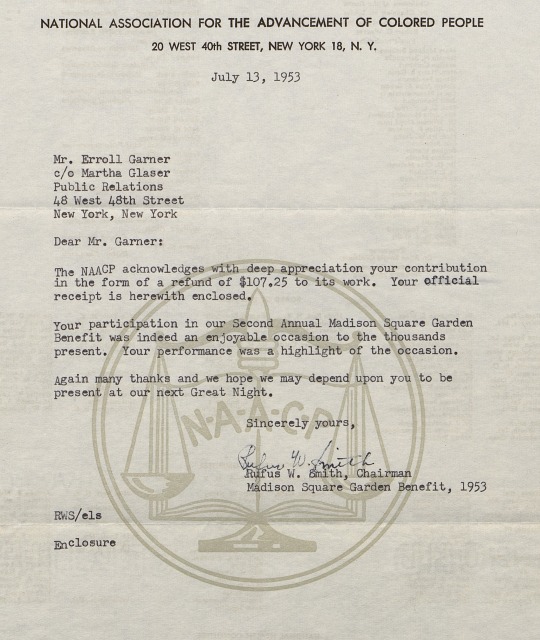
Image from folder “Erroll Garner Personal,” Erroll Garner Archive, 1942-2010, Box 3, Folder 16, Archives & Special Collections, University of Pittsburgh Library System.
Enclosed was a receipt dated June 22, 1953, for Garner’s contribution, in the form of a refund, of $107.25 to the organization. The value of that contribution today, adjusted for inflation, would be approximately $1,046.29.[2]
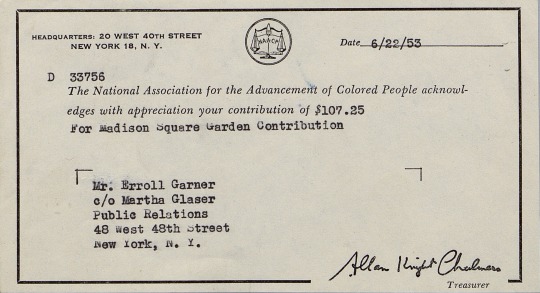
Image from folder “Erroll Garner Personal,” Erroll Garner Archive, 1942-2010, Box 3, Folder 16, Archives & Special Collections, University of Pittsburgh Library System.
The receipt and letter from Smith found in the Garner archive is one item that points to the musician’s engagement with the Civil Rights Movement of the era.
Notably, in 1953, the NAACP was firmly committed to ending segregation in the U.S. by adopting a litigation strategy targeting Jim Cow legislation. Led by then-attorney Thurgood Marshall, who worked with the organization in tandem with NAACP Legal Defense and Educational Fund, the civil-rights group was litigating Brown v. Board of Education at the U.S. Supreme Court. Garner’s Madison Square Garden appearance, and his subsequent donation, helped provide much-needed funds for the group to continue legal battles and other civil-rights efforts. Within a short period, the NAACP would win a decisive decision that would dramatically shift the country. More than a year after the benefit show, on May 17, 1954, the U.S. Supreme Court ruled unanimously that racial segregation of children in public schools was unconstitutional. This ruling would serve as a cornerstone in the fight to end segregation.
Garner was no stranger to this fight. He quietly made efforts to take on segregation and push for equality and racial harmony in his personal and professional life, as detailed by his manager Martha Glaser. Shortly after he died in 1977, Glaser responded to a February 10th, 1977 obituary in Rolling Stone magazine. Nat Hentoff, the famed jazz critic, penned the piece, which Glaser appreciated yet felt was incomplete and lacking in depth.

Image from folder “Martha Glaser Outgoing Correspondence,” Erroll Garner Archive, 1942-2010, Box 68, Folder 26, Archives & Special Collections, University of Pittsburgh Library System.
Writing to the editors, Glaser stated, “Garner also had a clause in his contracts BEFORE the 1954 Supreme Court decision, forbidding segregation of any kind in the audience, backstage, facilities, etc., at any appearance. He always wanted a ‘salt and pepper’ audience. There is much to be told about how this quiet man fought many battles which cleared the way for other performers. He did it without fanfare or awards.” I hope that Garner, through the efforts of scholars engaging with the archive, gets his due.
[1] “All Roads Lead to Madison Square Monday: Stars Will Shine at NAACP 'Great Night'” New York Amsterdam News (1943-1961), City edition; New York, N.Y. [New York, N.Y]21 Mar 1953: 26; Alvin Chick Webb, “There Were Stars Galore at NAACP Benefit: Canada Would've Loved NAACP's 'Great Night,'” New York Amsterdam News (1943-1961), City edition; New York, N.Y. [New York, N.Y]28 Mar 1953: 28.
[2] Value determined on March 17, 2021 using https://www.dollartimes.com/inflation calculator.
Works Cited
“All Roads Lead to Madison Square Monday: Stars Will Shine at NAACP’s ‘Great Night,’” New York Amsterdam News, 21 March 1953, pp. 26.
Alvin Chick Webb, “There Were Stars Galore at NAACP Benefit: Canada Would’ve Loved NAACP’s ‘Great Night,’” New York Amsterdam News, 28 March 1953, pp. 28.
0 notes
Text
Halloween 17-30
Doing things has kept from writing about things so much, but I have definitely been doing things. ^_^ Some of these things were stacked several to a day, but over all, it's been a great time keeping the holiday spirit.
Halloween 17: Attended Madison's Vampire's Ball, where I dressed as a pananggalan, complete with flying marionetted guts, and while I did not win a prize, I did make the MC mutter “Oh Jesus Christ” in what sounded like very real surprise.
Halloween 18: Schuster Farm's Corn Maze, Hayride and Pumpkin Patch! Corn mazes are awesome, the apple cider donuts were fresh, and pumpkins in a field under a bright blue sky look unexpectedly velvety. Also, Schuster has a gal walking around in an orange ballgown, so we all got to see pumpkin royalty!
Halloween 19: Baked ossi dei morti cookies. I...don't know what I made, but they were not white brittle bone-like cookies. They were, however, deliciously spicy and nutty. Might try again next year.
Halloween 20: Gave a tarot reading to a friend using my Cartes Infernal deck. I'm actually terribly bad at traditional tarot, as I can't remember the card meanings for love or money, but Cartes Infernal suits me pretty well.
Halloween 21: “Born of Man and Woman,” by Richard Matheson. The first thing I thought upon reading this story was “didn't The Simpsons do a version of this?” Pleasantly creepy and fun!
Halloween 22: “Finger, Finger,” by Margaret Ronan. A purposefully distasteful story that was nonetheless a quick read.
Halloween 23: “It's a Good Life,” by Jerome Bixby. I've always wondered where “wishing someone to a cornfield” came from!
Halloween 24: “Midnight Express,” by Alfred Noyes. A weirdly pretty kaleidoscopic piece.
Halloween 25: “Mr. Lupescu,” by Anthony Boucher. This story had a few wonderfully creepy bits, ones that I didn't predict at all. On one hand, most crimes are terribly banal and dull. On the other, some monsters are not. Halloween 26: Vincent Price reads Poe's The Raven. This is a man who makes the most out of an “R.” I first read this poem in fourth grade, and I'm surprised at how I much I remember.
Halloween 27: Wandering the Borderlands, by Doc Brite. A peek into the life of Brite's alter ego, Dr. Brite, the coroner of Orleans Parish. Weird and elegiac.
Halloween 28: Click-Clack the Rattlebag, by Neil Gaiman. What a weird and charming little thing. Like a few of the stories this month, it made me want to write my own.
Halloween 29: “To Die for Moonlight,” by Sarah Monette. I love Sarah Monette's work, and I particularly love her Booth stories. This one is about as classic as Kyle Murchison Booth gets, and though it's not my favorite (that's probably “Wait for Me”), it's still quietly atmospheric and affecting.
Halloween 30: First hour of Halloween, I fed the dead, which this year involved a good ham sandwich, sale pomegranate and some dark chocolate and cider. I come from a culture where the dead are fed as a matter of course, even if I have a bad tendency to forget when that happens from year to year. I can remember Halloween, though.
0 notes